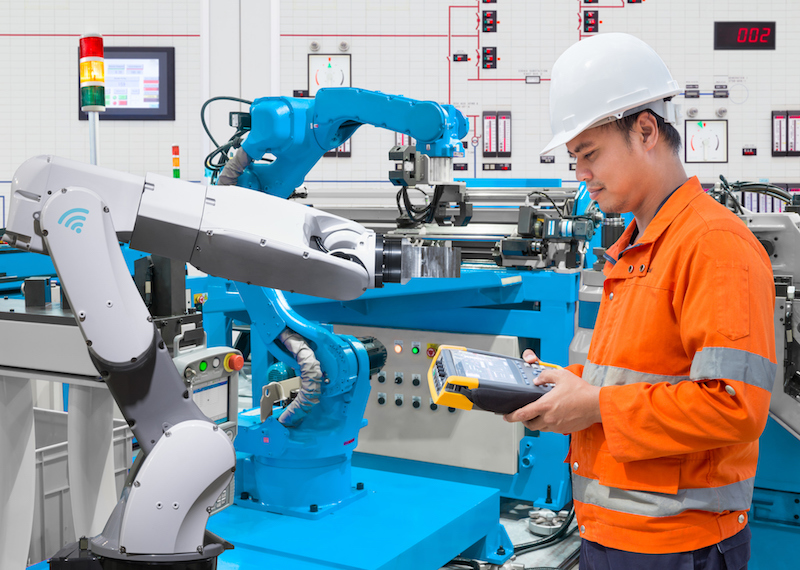Robot control systems are the backbone of modern robotics, enabling machines to perform complex tasks with precision and accuracy. These systems integrate various components, including sensors, actuators, and control algorithms, to govern the behavior of robots in diverse environments. In this article, we will delve into the world of robot control systems, exploring their fundamental principles, types, and applications.

Principles of Robot Control Systems
A robot control system consists of several key components:
- Sensors: These devices detect and measure various parameters, such as position, velocity, acceleration, and force, providing essential feedback to the control system.
- Actuators: These components, like motors, hydraulic cylinders, or pneumatic systems, execute the commands generated by the control system, enabling the robot to move and interact with its environment.
- Control Algorithms: These mathematical models and programs process sensor data, calculate the desired actions, and generate control signals to drive the actuators.
- Control Unit: This is the brain of the robot control system, responsible for executing the control algorithms, processing sensor data, and communicating with other components.
The primary objective of a robot control system is to achieve precise control over the robot’s movements, ensuring stability, safety, and efficiency. To accomplish this, control systems employ various techniques, including:
- Feedback Control: This method uses sensor feedback to adjust the control signals, maintaining the robot’s stability and accuracy.
- Feedforward Control: This approach anticipates the robot’s behavior and adjusts the control signals accordingly, reducing errors and improving performance.
- Model-Based Control: This technique uses mathematical models of the robot and its environment to predict and optimize the control actions.
Types of Robot Control Systems
Several types of robot control systems have been developed, each with its strengths and weaknesses:
- Open-Loop Control: This system relies on pre-programmed instructions and does not use sensor feedback, making it suitable for simple, repetitive tasks.
- Closed-Loop Control: This system uses sensor feedback to adjust the control signals, ensuring precise control and adaptability to changing environments.
- Hierarchical Control: This architecture consists of multiple control layers, each responsible for a specific aspect of the robot’s behavior, enabling complex tasks and decision-making.
- Distributed Control: This system distributes control functions among multiple agents, such as robots or sensors, allowing for cooperative behavior and improved flexibility.
Applications of Robot Control Systems
Robot control systems have numerous applications across various industries, including:
- Manufacturing: Robots are used for assembly, welding, and material handling, improving efficiency and reducing costs.
- Healthcare: Robots assist in surgical procedures, patient care, and rehabilitation, enhancing precision and minimizing risks.
- Service Robotics: Robots are employed in hospitality, transportation, and education, providing customized services and improving customer experiences.
- Aerospace: Robots are used for space exploration, satellite maintenance, and spacecraft assembly, pushing the boundaries of human knowledge and exploration.
Challenges and Future Directions
While robot control systems have made significant progress, several challenges remain:
- Complexity: Integrating multiple sensors, actuators, and control algorithms can lead to system complexity, making debugging and maintenance more difficult.
- Uncertainty: Robots often operate in uncertain environments, requiring control systems to adapt to changing conditions and unexpected events.
- Human-Robot Interaction: As robots increasingly collaborate with humans, control systems must ensure safe and efficient interaction, considering factors like communication, trust, and decision-making.
To address these challenges, researchers are exploring new technologies and techniques, such as:
- Artificial Intelligence: AI and machine learning algorithms can improve control system adaptability, enabling robots to learn from experience and adjust to new situations.
- Cloud Robotics: Cloud-based infrastructure can provide scalable computing resources, data storage, and software services, supporting more complex and distributed control systems.
- Cyber-Physical Systems: The integration of physical and computational components can create more resilient and efficient control systems, leveraging advances in areas like the Internet of Things (IoT) and edge computing.
FAQ
- What is the primary function of a robot control system?
The primary function of a robot control system is to govern the behavior of a robot, enabling it to perform specific tasks with precision and accuracy. - What are the key components of a robot control system?
The key components of a robot control system include sensors, actuators, control algorithms, and a control unit. - What is the difference between open-loop and closed-loop control?
Open-loop control relies on pre-programmed instructions, while closed-loop control uses sensor feedback to adjust the control signals, ensuring precise control and adaptability. - What are the applications of robot control systems in healthcare?
Robot control systems are used in surgical procedures, patient care, and rehabilitation, enhancing precision and minimizing risks. - What are the challenges facing robot control systems, and how are they being addressed?
The challenges facing robot control systems include complexity, uncertainty, and human-robot interaction. Researchers are addressing these challenges by exploring new technologies and techniques, such as artificial intelligence, cloud robotics, and cyber-physical systems.
Conclusion
Robot control systems are a vital aspect of modern robotics, enabling machines to perform complex tasks with precision and accuracy. By understanding the principles, types, and applications of robot control systems, we can appreciate the significant impact they have on various industries, from manufacturing and healthcare to aerospace and education. As researchers continue to address the challenges facing robot control systems, we can expect to see even more sophisticated and adaptable systems, capable of interacting seamlessly with humans and their environments. The future of robotics is exciting and promising, and the development of advanced robot control systems will play a key role in shaping this future.
Closure
Thus, we hope this article has provided valuable insights into Introduction to Robot Control Systems. We hope you find this article informative and beneficial. See you in our next article!
